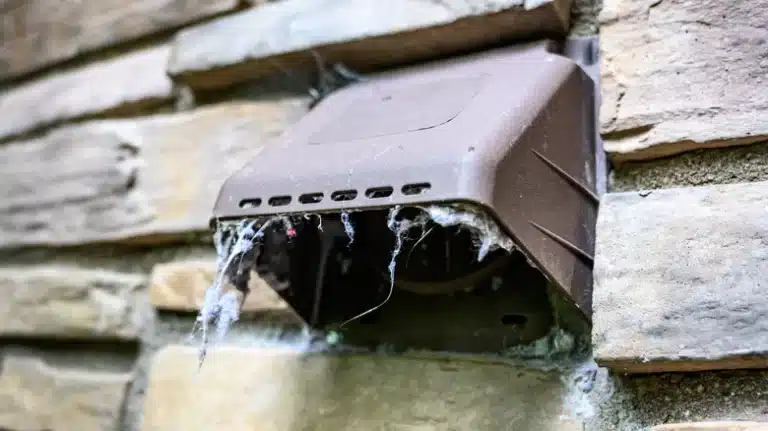Running a cleaning company can be lucrative, but understanding the financial aspects is crucial for success.
In this blog, we’ll explore how much cleaning companies can make and delve into How a cleaning company increase profit margin?
How Much Do Cleaning Companies Make?
Cleaning companies in the United States typically generate an average annual income ranging from $50,000 to USD 60,000. This translates to an hourly income of approximately $26 to USD 32 per hour, calculated based on a standard work month of 160 hours. For companies with substantial sales volumes, earnings can reach as high as $110,000 annually.
In the United Kingdom (UK), cleaning businesses typically earn an average annual income of £25,000 to GBP 35,000, with an hourly income of approximately £13 to GBP 18 per hour, considering a similar 160-hour work month. High-performing companies in the UK may earn up to GBP 75,000 annually.
In Australia, cleaning companies tend to generate an average annual income ranging from AUD 55,000 to AUD 80,000, translating to an hourly income of approximately AUD 26 to AUD 52 per hour based on a 160-hour work month. For cleaning businesses with substantial sales volumes in Australia, earnings can potentially exceed AUD 180,000 annually.
Factors Influencing Cleaning Company Earnings
Cleaning companies’ earnings are influenced by several critical factors, each of which can significantly impact their profitability. Let’s delve deeper into these factors and explore their effects on a cleaning company’s financial success.
Location Matters on How a cleaning company increase profit margin
The geographic location of a cleaning company is a fundamental determinant of its potential earnings. Here’s a closer look at how location can shape a cleaning business’s financial prospects:
- Population Density: In densely populated urban areas, cleaning companies tend to have a broader client base. This is because more people live and work in these areas, creating a higher demand for cleaning services. As a result, cleaning companies in urban settings often have more opportunities to secure clients, leading to increased revenue potential.
- Market Rates: Location can also influence cleaning companies’ rates for their services. In cities or affluent neighbourhoods, clients are often willing to pay premium prices for high-quality cleaning services. This means that cleaning companies in such locations can command higher rates, contributing to greater profitability.
- Competition: The level of competition in a specific location can affect a cleaning company’s earnings. In highly competitive areas, businesses may need to keep their prices competitive, which can impact profit margins. Conversely, companies may have more flexibility in areas with less competition to set higher prices and maintain healthier profit margins.
- Economic Factors: Economic conditions in a region can also influence a cleaning company’s earnings. In areas with a strong economy and a thriving business sector, a higher demand for commercial cleaning services may lead to increased revenue opportunities.
- Seasonal Variations: Location can also determine the extent of seasonal variations in demand. For example, cleaning companies in tourist destinations might experience fluctuations in demand during peak and off-peak seasons, which can impact their annual earnings.
- Cost of Living: Living in a specific location can affect operating costs for a cleaning company. In areas with a high cost of living, expenses such as employee wages, rent, and utilities may be higher, impacting overall profitability.
Target Market and Services Offered
Identifying the right target market and offering specialized cleaning services can be a game-changer for a cleaning company’s profitability. Here’s a closer look at how focusing on your target market and offering specialized services can enhance your earnings:

- Niche Markets: Many successful cleaning companies thrive by catering to niche markets. These niches include specialized sectors such as medical facilities, industrial sites, or eco-friendly cleaning services. By honing in on a specific niche, a cleaning company can become an expert in that area, often allowing them to command higher rates due to their specialized knowledge and skills.
- Commercial Cleaning Services: Providing commercial cleaning services to businesses can be lucrative. Businesses often require regular cleaning to maintain a professional and hygienic environment for employees and clients. Offering office cleaning, restaurant sanitation, or retail space maintenance services can lead to consistent, high-paying contracts.
- Medical Facilities: Cleaning companies that specialize in healthcare settings, such as hospitals and clinics, often have access to more substantial contracts. Cleaning medical facilities requires adherence to strict cleanliness and sanitation standards, and companies that excel in this area can earn a premium for their services.
- Residential Cleaning for High-End Clients: Some cleaning companies focus on the residential market but target high-end clients who demand top-notch service. These clients are often willing to pay premium prices for a thorough and personalized cleaning experience, which can significantly boost a cleaning company’s profitability.
- Add-On Services: Additional services, such as carpet cleaning, window washing, or deep cleaning, can also increase a cleaning company’s revenue. These add-on services can be provided as a one-time or part of a regular cleaning package.
Company Size and Efficiency
The size and efficiency of your cleaning company can play a pivotal role in determining its earnings. Here’s a closer look at how these factors impact profitability:
- Larger Companies: Larger cleaning companies with more employees and resources often have the potential to generate higher revenues. They can take on larger contracts and handle a more extensive client base. However, larger companies typically face increased operating costs, including higher wages, equipment expenses, and administrative overhead.
- Smaller, Well-Organized Businesses: Smaller cleaning companies can maintain healthy profit margins through efficient operations. Smaller businesses can keep overhead costs low by carefully managing expenses and optimizing employee schedules. Additionally, smaller companies can provide a more personalized and customer-centric experience, leading to higher client retention and word-of-mouth referrals.
- Operational Efficiency: Efficiency is critical to profitability in the cleaning industry. Optimizing employee schedules, using modern cleaning equipment and technologies, and streamlining administrative processes can improve efficiency. Efficient operations reduce labour costs and increase the number of clients a company can serve, ultimately boosting earnings.
- Quality of Service: Regardless of size, delivering consistently high-quality service is essential for long-term success. Satisfied clients are more likely to renew contracts and recommend your services to others, which can directly impact revenue and profitability.
Profit Margins in the Cleaning Industry
Understanding profit margins is crucial for any cleaning company looking to maintain financial stability and achieve long-term growth. Let’s take a closer look at the typical profit margins in the cleaning industry and why they matter:
- Average Profit Margins: In the cleaning industry, profit margins vary widely depending on several factors, including location, services offered, pricing strategy, and operational efficiency. On average, many cleaning companies aim for 10% to 30% profit margins. This range allows companies to cover operating expenses, pay employee wages, and have room for growth and reinvestment.
- Operating Expenses: Profit margins reflect a company’s ability to cover operating expenses while generating a surplus. These expenses include employee salaries and benefits, cleaning supplies and equipment, insurance, rent or lease payments, utilities, and administrative expenses. Achieving a profit margin above 10% ensures these costs are adequately covered.
- Employee Wages: Employee wages often constitute a significant portion of a cleaning company’s expenses. Maintaining a healthy profit margin allows the company to offer competitive wages to attract and retain skilled cleaning staff. Happy and well-compensated employees are more likely to provide quality service, leading to satisfied clients and repeat business.
- Growth and Reinvestment: Profit margins above 10% also provide the company with the financial flexibility to reinvest in the business. This can include upgrading equipment, expanding services, marketing initiatives, or hiring additional staff to accommodate growth in client demand. Reinvesting in the business is essential for long-term sustainability and competitiveness.
- Pricing Strategy: Pricing strategy plays a significant role in determining profit margins. Companies that charge higher rates for premium services or specialize in niche markets often have higher profit margins. However, it’s crucial to balance competitive pricing and profitability to attract and retain clients.
- Market Considerations: Profit margins can also be influenced by market conditions. Companies may need to operate with slimmer profit margins in highly competitive markets to remain competitive. Conversely, companies may have more pricing flexibility in areas with less competition or a higher demand for specialized services.
- Cost Management: Effective cost management is essential for maintaining healthy profit margins. Cleaning companies should regularly review their expenses and identify areas where cost savings can be achieved without compromising service quality or employee satisfaction.
How to make more Profit Margins for the cleaning business?
To increase profit margins in your cleaning company, consider implementing the following strategies:
- Efficient Scheduling: Optimize employee schedules to reduce downtime and maximize productivity.
- Streamlined Operations: Invest in software and tools that enhance operational efficiency, reducing labour costs.
- Marketing : Make sure to do marketing and ads to get a new list of customers
- Competitive Pricing: Research local competitors and set competitive but profitable pricing.
- Employee Training: Well-trained employees can improve the quality of service, leading to satisfied clients willing to pay more.
- Marketing and Branding: Invest in marketing efforts to attract high-value clients and build a strong brand reputation.
- Customer Retention: Focus on customer satisfaction and retention to reduce the cost of acquiring new clients.
Cleaning companies have the potential to make a substantial income, but their earnings depend on various factors, including location, target market, services offered, and company size.
Profit margins can vary, but effective strategies can help boost profitability.
By understanding these factors and implementing sound business practices, cleaning companies can thrive and prosper in this competitive industry.




Leave a Comment